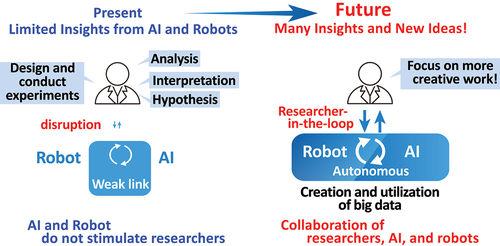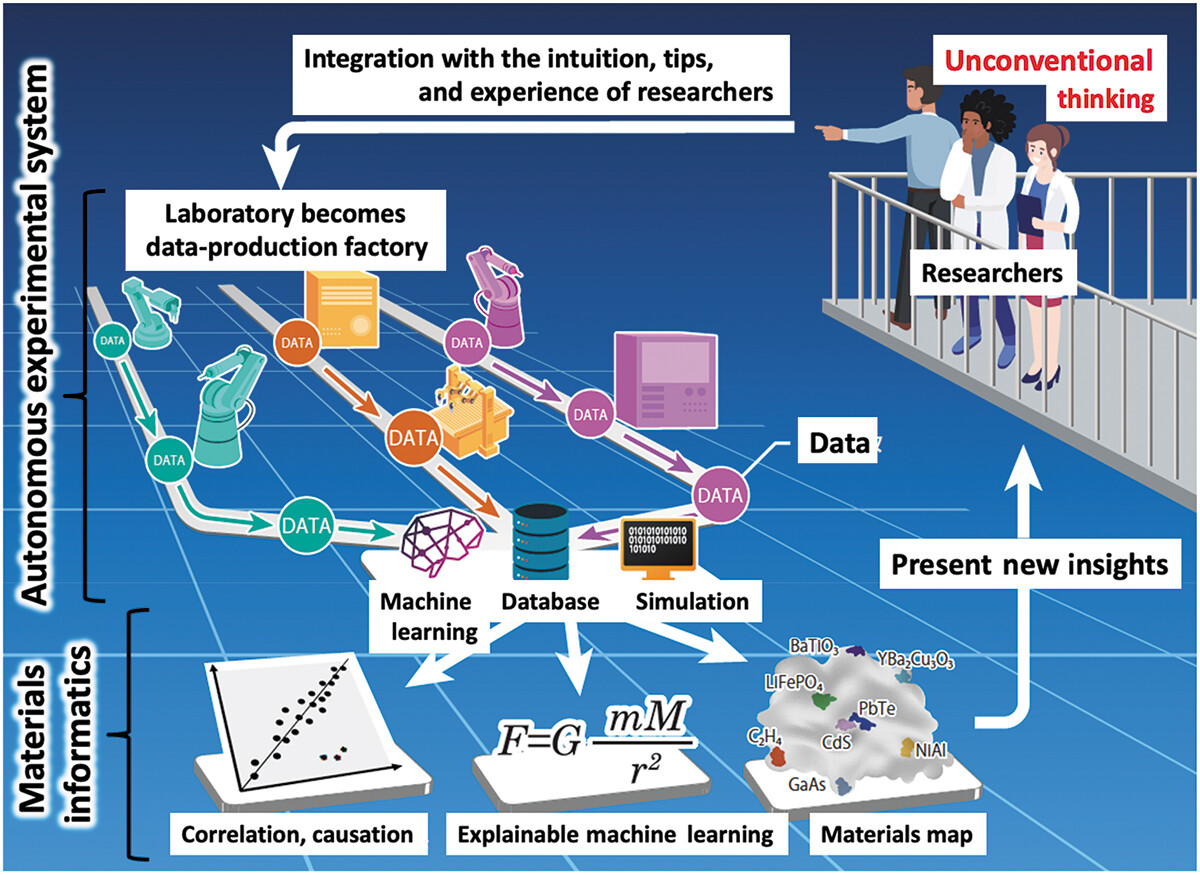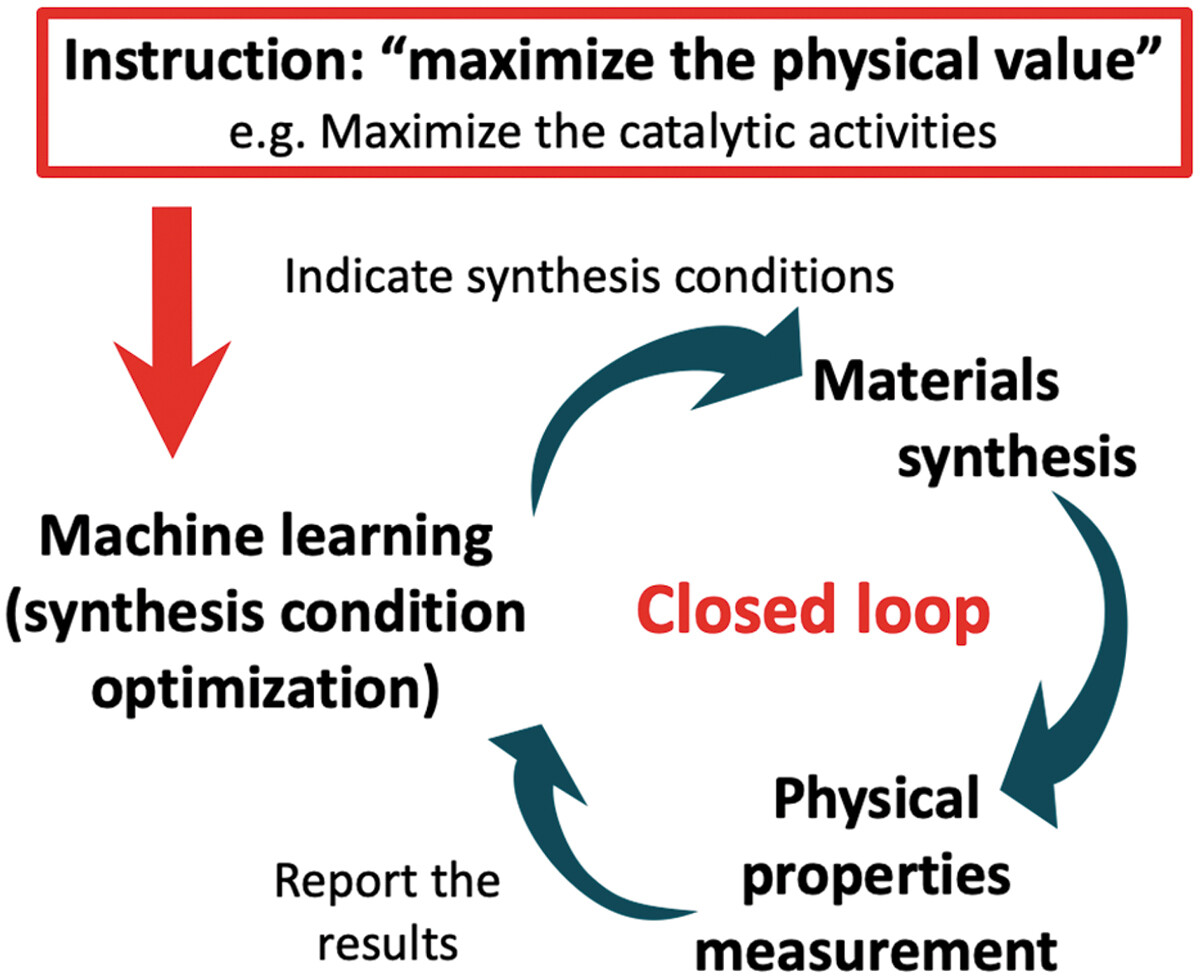Journal:Autonomous experimental systems in materials science
| Full article title | Autonomous experimental systems in materials science |
|---|---|
| Journal | Science and Technology of Advanced Materials: Methods |
| Author(s) | Ishizuki, Naoya; Shimizu, Ryota; Hitosugi, Taro |
| Author affiliation(s) | Tokyo Institute of Technology, The University of Tokyo |
| Primary contact | Email: hitosugi at g dot ecc dot u dash tokyo dot ac dot jp |
| Year published | 2023 |
| Volume and issue | 3(1) |
| Article # | 2197519 |
| DOI | 10.1080/27660400.2023.2197519 |
| ISSN | 2766-0400 |
| Distribution license | Creative Commons Attribution 4.0 International |
| Website | https://www.tandfonline.com/doi/full/10.1080/27660400.2023.2197519 |
| Download | https://www.tandfonline.com/doi/pdf/10.1080/27660400.2023.2197519 (PDF) |
|
|
This article should be considered a work in progress and incomplete. Consider this article incomplete until this notice is removed. |
Abstract
The emergence of autonomous experimental systems (AESs) integrating machine learning (ML) and robots is ushering in a paradigm shift in materials science. Using computer algorithms and robots to decide and perform all experimental steps, these systems require no human intervention. A current direction focuses on discovering unexpected materials and theories with unconventional research approaches. This article reviews the latest achievements and discusses the impact of AESs, which will fundamentally change the way we understand research. Moreover, as AESs continue to develop, the need to think about the role of human researchers becomes more pressing. While ML and robotics can free us from the repetitive aspects of research, we need to understand the strengths and limitations of ML and robots and focus on how humans can perform higher creativity. In addition, we also discuss inventorship and authorship in the era of autonomous systems.
Keywords: autonomous experimental system, closed-loop, machine learning, robots, materials science, inventorship, authorship, human researcher, human’s role
Introduction
The total number of all possible small organic molecules is estimated to be at least 1060[1,2], and from that one can imagine a similarly large number of possible materials being derived using those molecules. This number helps illustrate the vastness of the materials search space, which must contain many materials that can help address current societal problems. In a way, the world of materials is a frontier for exploration, much like space or the deep sea.
How can we quickly and systematically find unexpected materials within this enormous search space? To this end, materials science needs a tool that can transcend the limits of human capabilities to serve as a materials explorer (Figure 1), akin to a spaceship or a deep-sea exploration vessel.
|
The core of such a materials explorer is the autonomous experimental system (AES) based on machine learning (ML) and robots (green, orange, and purple in Figure 1). Here, the term "autonomous" means that a computer algorithm decides the next experimental steps while robots perform all experimental steps. This approach, which involves no human intervention, is called the closed-loop experiment (Figure 2).
|
In general, new materials are sought in a multi-dimensional space by optimizing many relevant experimental parameters. Because of the vastness of the search space, the manual optimization of these parameters by individual researchers only produces incremental results that do not show the big picture. However, this problem is ideally suited for the AES to address. Figure 2 illustrates one such example. Here, based on the initial instructions, ML decides which compound to synthesize and feeds the corresponding directions to the robots; the robots synthesize, test, and report the results back to the algorithm, repeating the cycle until the desired result is obtained. This autonomous experimental approach drastically speeds up the materials exploration processes.
The concept of the materials explorer fundamentally changes the way we understand and conduct materials research, across three stages:
Stage 1: Optimization of the yield of target substances - Here, the target compound is known, but the optimum synthesis conditions are unknown. The target compound is decided by the human researchers before the experiment, and the AES quickly optimizes the synthesis conditions of the target compound within the search space specified by the human researchers. [3]
Stage 2: Finding new materials with desired properties - Here, the target physical properties are decided, but the compound possessing these properties is unknown. The AES quickly finds the best material within the search space specified by the human researchers. In contrast to Stage 1, it is the composition of the materials that is changed to find new compounds to meet the required physical properties. Materials with a variety of crystal structures and hierarchical structures are also explored.
Stage 3: Finding new materials or principles that no one has thought of before - Here, new materials, theories, and principles that are unexpected to researchers are discovered by combining the results from autonomous experiments, materials informatics, and human researchers (Figure 1). [4]
At present, the proofs of concepts of Stages 1 and 2 have been demonstrated in a variety of fields. [5–17] Expanding the application of AESs to a variety of experiments has become the next objective. Meanwhile, Stage 3 is rapidly advancing owing to the development of ML, robotics, and materials informatics. In this stage, it is critical to embed the researchers’ intuition and experience into the construction of theories. This inclusion of the human role is often referred to as having a "human-in-the-loop" or "researcher-in-the-loop."
An important point to note is that the transformation resulting from the three stages will change the way researchers think, giving completely new perspectives that researchers cannot obtain using conventional research methods. In addition, the transformation is not limited to a single laboratory; instead, it will change how we conduct research through a digital transformation of materials science. For example, experimentalists can remotely fabricate materials via the internet. In the same way, theorists can fabricate materials to test their predictions.
The data generated by such a system would fall into the domain of "big data." Researchers use this big data to extract human-readable information (i.e., via materials informatics). Because ML and robotics alone can neither find insights nor discover concepts in physics and chemistry, human researchers will always remain central to the research. The key point is that materials scientists must understand what ML and robotics can solve, and must set the right problem to be solved. The strength of human researchers lies in concept creation or problem identification in the larger context. Combining these strengths with ML and robotics is critical to accelerating research (i.e., the researcher-in-the-loop).
The process of autonomous materials exploration, however, raises one fundamental question: when experiments are performed autonomously and new materials are found without human intervention, who is the discoverer and inventor? This question not only relates to the authorship of papers and the inventorship of patents, but it also concerns researchers’ motivations. It is important to address this discussion as the autonomous experimental approach develops.
In this article, we review the trends and the prospects of AESs in materials science, specifically through the following aspects:
- the overall status of autonomous experiments in materials science;
- the history and the latest topics of autonomous materials synthesis;
- the future of research using the AES;
- some important take-home lessons we have learned when developing and using such a technology; and
- the future of authorship and inventorship.
Throughout this review, we address what human researchers should focus on in the era of autonomous research. The year 2020 was momentous for this era; there were significant advancements in the field of autonomous research. This review aims to further contribute to the expansion of the era of autonomous materials research.
Present status of autonomous experiments
A brief description of our own autonomous experiments
References
Notes
This presentation is faithful to the original, with only a few minor changes to presentation. In some cases important information was missing from the references, and that information was added.












